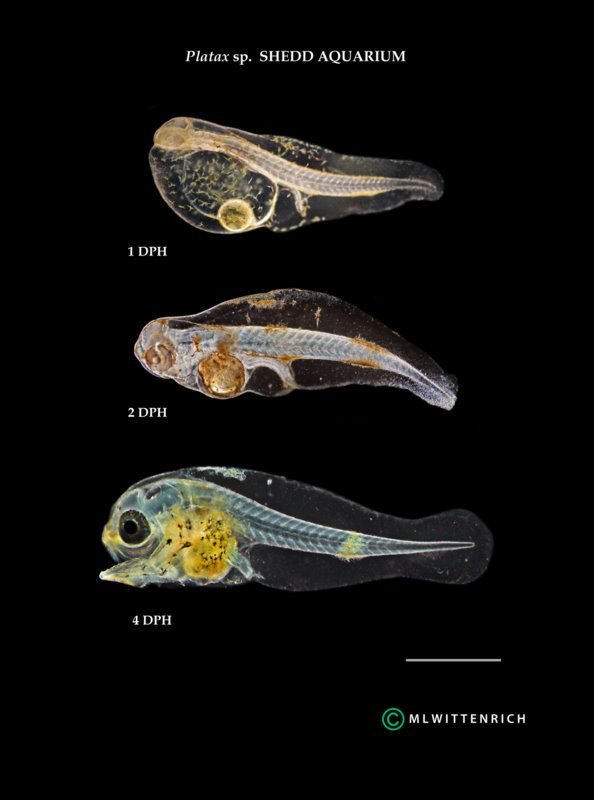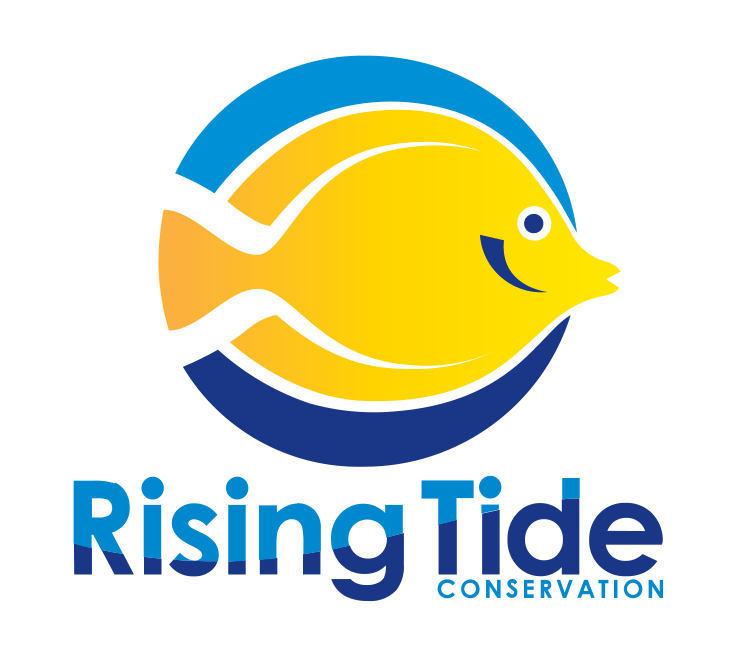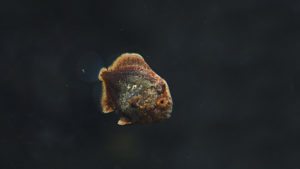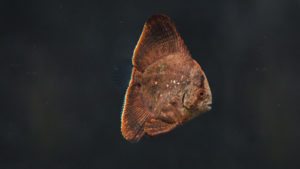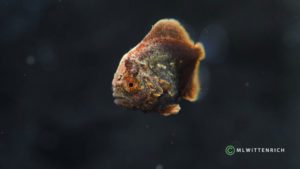Every now and then we get a shipment of eggs or larvae that really intrigues me. The last shipment we received was from the Shedd Aquarium in Chicago and has become one of my favorite larval tanks. I am particularly fond of this tank, partly because of what is in it and partly because of what it took to get here. Several months ago we were happy to get our first bag full of eggs from the Shedd Aquarium. The larvae did not survive shipping, but we managed to preserve a few for DNA analysis. The results were not terribly diverse, but very exciting: arc eye hawkfish (Paracirrhites arcatus) and orbic batfish (Platax orbicularis). The orbic batfish were especially interesting due to the extreme size. The eggs measured about 1.3 mm in diameter, which is considerable for a marine fish.
Odalis Garcia and George Parsons from the Shedd carefully collected and shipped six shipments to the Tropical Aquaculture Laboratory. Each shipment yielded a few to a dozen larvae upon arrival and I carefully watched each writhing sliver in hopes that it might be a Platax sp. We stocked the larvae into the larval tanks, but just couldn’t get them to survive the night. We had ideas why the shipping and survival wasn’t where it should be and, through open communication, Odalis continued to try new methods of shipping the eggs.
Four days ago these efforts paid off. We received three bags of newly hatched larvae from Odalis. These were not ordinary larvae, the tiny slivers that you had to squint your eyes to see. These larvae were enormous. In the bag, at hatching, the larvae measured about 3.2 mm in length. We floated the bags to allow the slight temperature difference to equalize before we carefully scooped the floating larvae off the surface. About 50 larvae survived the shipping and made it into their new 54 gallon home. On the second day the larvae developed very large pectoral fins that could be seen easily from above. The larvae weren’t ready to feed, but were growing. By the third day the eyes had become pigmented with bright silver, the pectoral fins grew even larger and the larvae were ready to feed. We added live Nannochloropsis to tint the water a light green, added an airstone to the side wall to create a weak current, and added rotifers and cultured copepods to the tank. I sampled a single larva today to observe development and was amazed. The larva measured almost 4 mm in length and had obviously taken advantage of the food source. After applying slight pressure to the full stomach the larva extruded several rotifers and copepod nauplii. A good start to this larval rearing run!
Special thanks to Odalis Garcia and George Parsons from the Shedd Aquarium. We are extremely excited about this photographic record that will undoubtedly continue.
